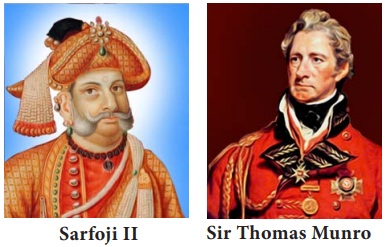Educational Development in India | Chapter 5 | History | 8th Social Science - Educational Development in Tamil Nadu | 8th Social Science : History : Chapter 5 : Educational Development in India
Chapter: 8th Social Science : History : Chapter 5 : Educational Development in India
Educational Development in Tamil Nadu
Educational Development in Tamil Nadu
The pattern of education in Tamil
Nadu was not merely reading and understanding of books but listening to learned
persons. The Thirukkural stresses the need for education and warns the dangers
of illiteracy. In ancient times, the school was called ‘Palli’ and the teacher
was a ‘Kanakkayar’.
A significant development took place
in the field of education during the Pallava period. Ghatika was an educational
institution. The Pallava kings supported those educational institutions through
endowments. The Vaishnava and Saiva mutts provided boarding and lodging
facilities to all students and teachers.
Hiuen Tsang gives a graphic picture
about Kanchi Buddhist centre and Kanchi, was considered as the main centre of
learning.
The Chola period was the most
brilliant and creative period in the Tamil literature. Tamil education enjoyed
a greater connection with religion and temple. Free education was given to
people. The curriculum and syllabi had a theoretical background. From the
inscription of that period, we can now gain knowledge about the qualification
of teacher, method of teaching, salary of teachers, food provided to the
students and the land given to the schools etc. Rajaraja Chaturvedimangalam was
the famous seat of a Vedic college (Ennayiram in Former South Arcot district).
At Tirubuvanai (in Pondicherry) Vedic college flourished. The Tiruvidaikkalai
inscription mentions a library. Tiruvaduthurai inscription of Virarajendra
refers to a medical school.
The Pandya kings patronised Sanskrit
in an exemplary way. It is revealed in the copper plates. The educational
institutions of that period were called as Ghatigai, Salai and Vidhyasathana.
Lands were given to teachers. They
were known as Salabhogam (e.g. Vallabha Perunchalai at Kanyakumari) . The
famous college during the Pandya regime was Kandhalur Salai. Mutts occupied a
significant place in the promotion of education. Learning flourished under the
Vijayanagar rule. Many educational institutions were established under their
patronage. Thinnappalli Koodam was established during the Nayak rule.
Education in Modern period
Fernandez, who came to Madurai
during the time of Veerappa Nayak, established a primary school. The Maratha
ruler Sarfoji II collected the old records and kept them in the Saraswathi
Mahal library, Tanjore. He also had a printing press with Devanagari type,
located there.

Sir Thomas Munro the Governor of
Madras Presidency (1820-27) was highly responsible for the introduction of
Western education in Madras Presidency. He appointed a committee to conduct a
statistical survey of the condition of education. The Education Commission of
Munro recommended the creation of two principal schools (Collectorate and
Tahsildare schools) in each district. In 1835 Lord William Bentinck passed a
resolution favouring the introduction of western system of education in India.
Wood’s Despatch of 1854 introduced the Department of Public instruction in
Madras Presidency. Grant-in-aid was given to all schools. The Madras University
was founded in 1857. It was the first University in Tamil Nadu under the
British rule. In 1882 the Local Boards Act was passed. The Board was empowered
to open new schools and to get grants from the government. By 1938, all
subjects except English were taught in Tamil in schools.
The Annamalai University was founded at Chidambaram in 1929. This was the next step in the development of higher education
Education since independence
Free education at the secondary
school level was introduced in 1964 – 65.
The Gandhigram Rural College was
established in 1975. Since 1971, Distance education has also been introduced in
Tamilnadu to educate those who could not go to colleges.
In 1956, Midday Meal Programme was
introduced in schools. Later, it was extended as Nutrition Meal Scheme in 1982
to avoid drop-outs in schools.
Since 1986 several changes have
taken place to meet the changing dynamics of the society, in keeping with the
National Policy of Education.
Related Topics